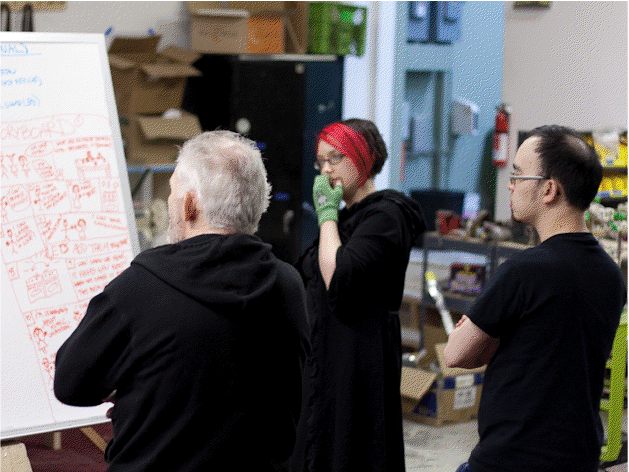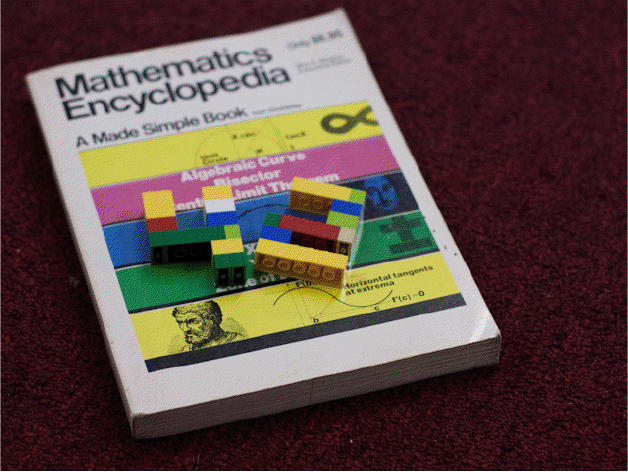Jigsaw and the Great Global Hackerspace Challenge
Gentlemen, ladies, and partially-sentient automata—start your irons!
Guest post by Jigsaw member James Gray
Right now, teams from thirty hackerspaces, makerspaces, and diffuse conglomerates of autodidactically-inclined individuals around the world are putting their heads together in preparation for what promises to be a creative contest of quasi-mythological, yea, of nigh- legendary proportions. Their goal: to capture eternal glory in a friendly six-week engagement, drawing upon their skills to create a project of educational merit and some portability. In short, these bold citizen-scientists are locked in a duel of ingenuity where the most imaginative builder will triumph, each putting their skills to work to Do Something about the problems facing education today.
…
If you’ve been following this blog for long, you are probably familiar with Jigsaw Renaissance. We’re your friendly neighborhood learning and making community. One of our core goals has always been to be “a school for the anti-student,” so we were ecstatic to hear about this little exchange of electronic eccentricities. Our core team is revving up to make this sprint happen, with our members and friends dropping by to chip in. And just so you don’t get any mad ideas about us building an unholy abomination stitched together from whatever fell off the corpse wagon and passing it off as a demonstration of the biological applications of electrical currents, I’m going to tell you a bit about a few of the project ideas we’ve been kicking around.

The ground rules of this challenge are simple:
- Build something!
- The magic ingredients are a microcontroller and a portable power source, although paradox-based generators are strongly discouraged after last year’s incident with the squirrels.
- The project should help with education, the meaning and interpretation of which is left up to the individual contenders.
- Three finalists will meet at the Bay Area Maker Faire in May, but only one will emerge triumphant.
To liven things up a bit, teams will be competing for some electronics equipment with which to enliven their sponsoring hackerspace, with multimeters and oscilloscopes for the victors and soldering irons for all. This is all courtesy of the event’s sponsor, Element 14, who is also generously providing a $900 stipend to underwrite each team’s development efforts.
And who am I, you ask? Why, a member of Jigsaw’s team of artistic alchemists and tin-wielding world-changers. I’m here to tell you that the others are going to burn! We are going to out-think, out-create, and out-develop every other team on the planet while changing the face of education forever! Forever, I tell you! Well, at least until next Thursday, or possibly Friday—when is that new shipment of coffee beans due again? Ah, they’ve already arrived?
Well, perhaps the others don’t have to “burn,” per se. After all, the intent of the contest is not to find the one invention which will single-handedly reform all educational shortcomings through sheer perspicacity and brilliance. The contest is intended to attract and focus the energies of makers worldwide, each addressing one small piece of this growing and global problem. The very diversity and abundance of projects will help us explore questions of greater import. How can we, makers all, whittle away at this problem through our various creative arts? How can we build—actually build—a better future for those who follow after us?
You may notice some themes in common as you read on. There are no quiz machines to be found here, nor are there any single-use kits whose consumption is intended to be the educational element. These are not devices intended solely for the benefit of sophisticated students locked safely away in the rarefied heights of the ivory tower. These tinker toys are intended, one and all, to totter their way through the trenches in brave yet troubled classrooms. These are devices intended to broaden the minds of young learners, unlocking alternative avenues to knowledge and sparking the creative empowerment of students who might otherwise be crushed between the dreary gears of institutionalized education. We will not single-handedly solve this dread deficiency, but we’re going to make a start. And if you have a better idea—stick it in the comments!
Hacking hacky-sacks for language learning

Multilingualism is believed to be a tonic of some potency with broad benefits to budding students. One concept we are exploring is that of a physically interactive device in the shape of a hacky sack or soccer ball which keeps a count for its user in one or more foreign languages. This multisensory experience would build familiarity and hopefully generate interest, providing a positive introduction to further learning in these areas. Integrating this device into institutionalized education would be fairly simple since it hijacks and augments an existing mode of play. It could also easily serve as part of a broader educational initiative.
Mechanically managed mathematical manipulation

Another idea which we’re considering involves bringing some concrete interactivity to the difficult early stages of mathematical education. Learning the rules for rearranging and solving mathematical equations can be very challenging for many students. It is an abstract process and one which the student usually approaches with a blank page and a pencil—far too many options! Our device would apply a few much-needed constraints by turning equations into physical objects which students can rearrange with their hands while trying to grasp the basics. It would also use a range of sensory input to provide validation and guidance, turning a challenging in- the-head problem into a naturalistic in-the-world problem.
Instant improvised musical meanderings

With education cutbacks seemly everywhere and students caught up in an AP-filled rush to college, arts education often seems to be first to the chopping block. But even on a good day, such instruction frequently fails to adequately nurture creative expression. This is in large part due to the difficulty of facilitating that sort of growth when faced with a room full of dozens of disinterested students.
We want to use electronics to solve the scaling problem and bridge the barrier to entry, creating training wheels for the act of creative expression. Students would be given handheld electrical instruments which abstract away some of the initial complexity of learning to play a traditional instrument, allowing even novices to achieve enjoyable results. Together, students will contribute to an impromptu group performance. This would require less explicit instruction than the traditional recorder, but it would allow free expression reminiscent of that embraced by jazz groups and drum circles. This creative success would provide students with valuable encouragement towards future creative expression and exploration. It would also be easier to teach for, which we hope would help schools to retain musical education in their curricula.
